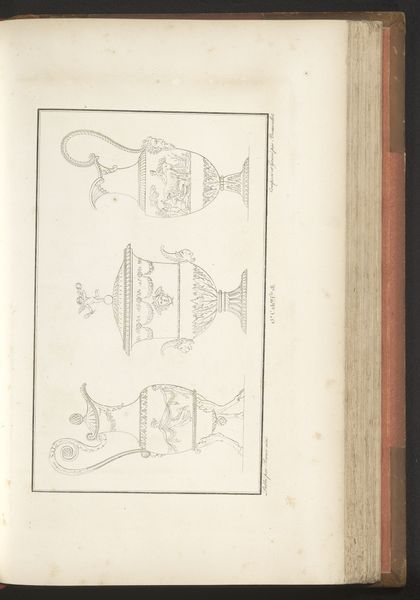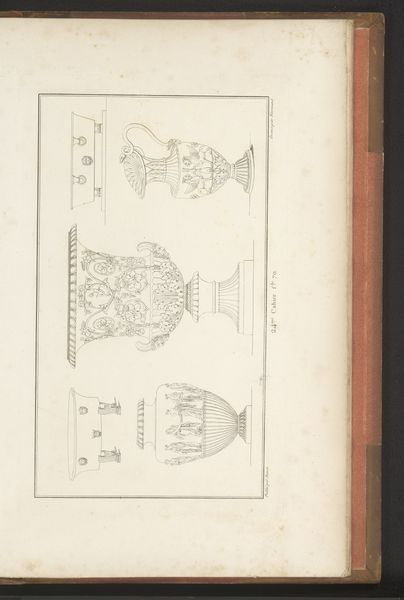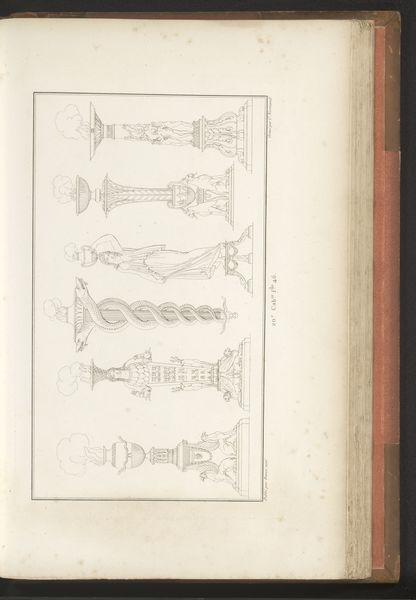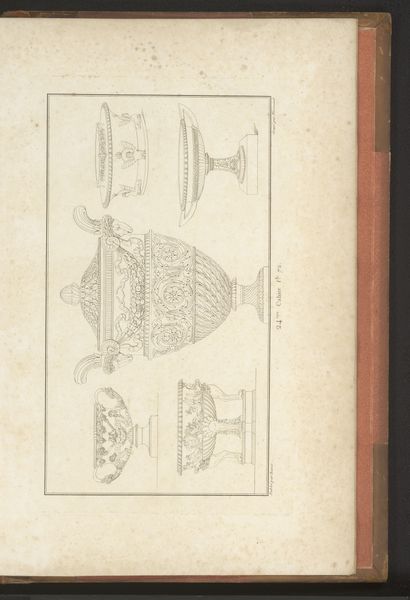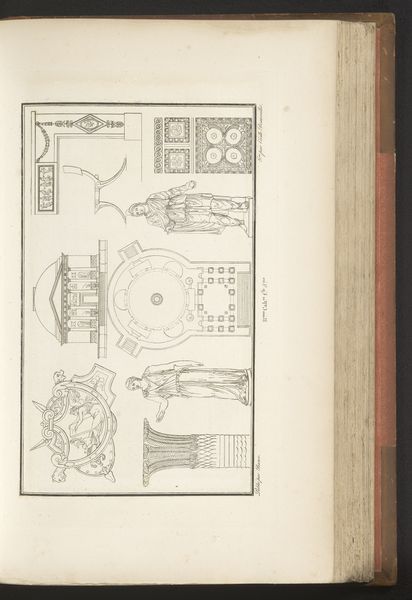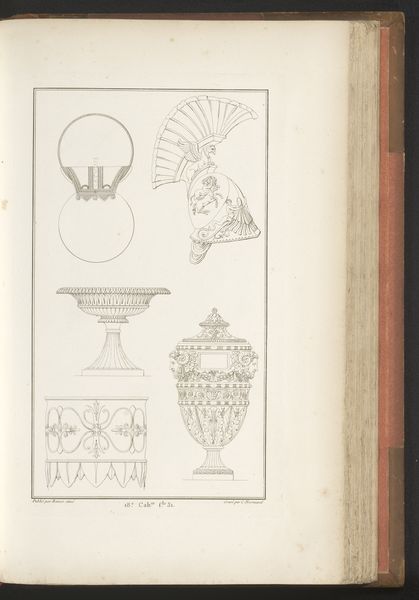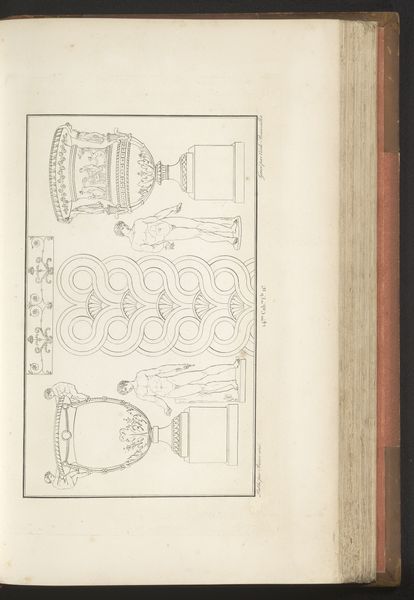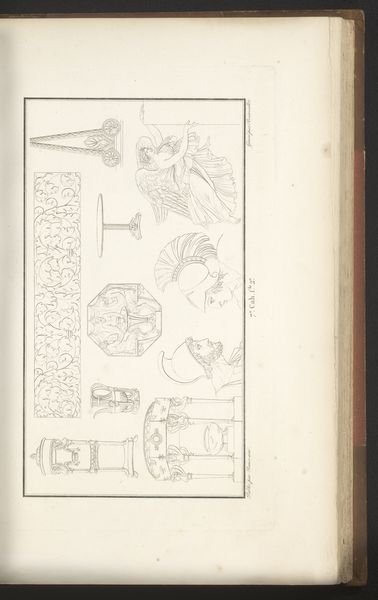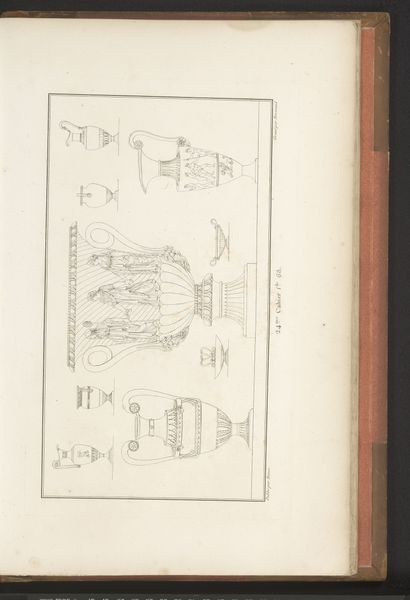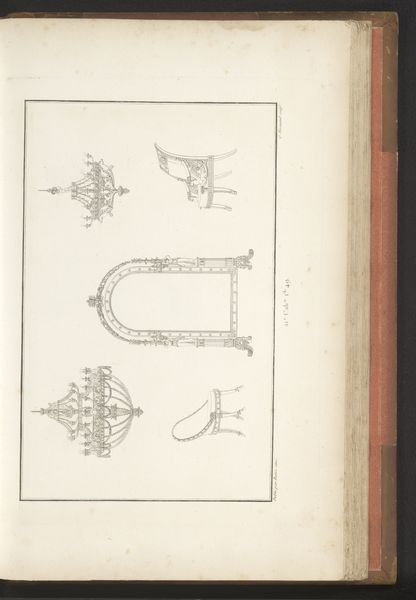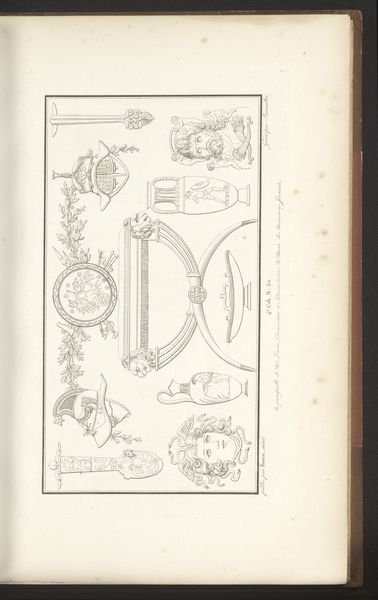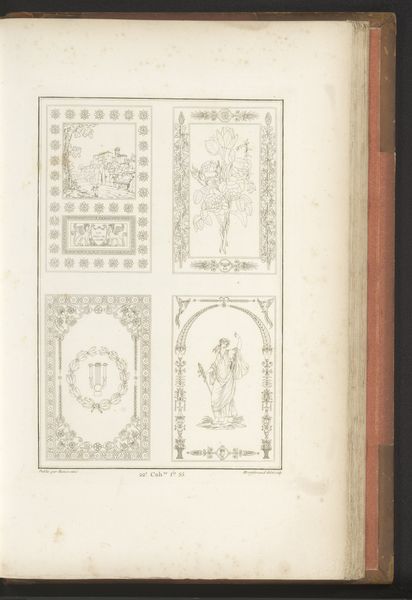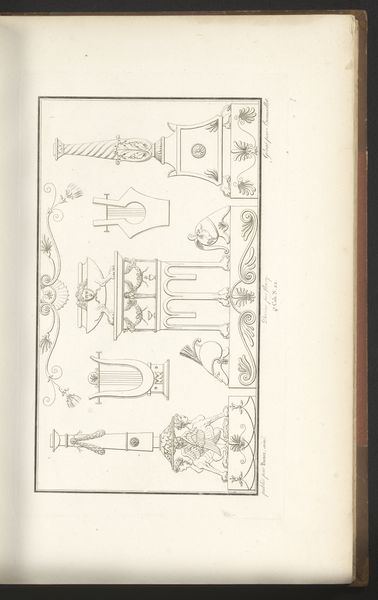
drawing, paper, ink
#
drawing
#
paper
#
ink
#
geometric
Dimensions: height mm, width mm
Copyright: Rijks Museum: Open Domain
Curator: Looking at this work, I immediately think of neoclassical austerity, that emphasis on simple geometric form. Editor: Yes, there's a subdued, almost ghostly quality to Charles Pierre Joseph Normand's "Three Vases," a drawing from 1820, rendered in ink on paper. The lack of shading gives it a blueprint-like feel. How do you read that sparseness? Curator: Well, the vase form itself carries such immense symbolic weight through millennia, representing everything from communal ritual vessels to symbols of life and death in funerary contexts. Presenting them like this strips them bare, making us confront that fundamental symbolism. It asks: What *is* a vase outside of its ornamental function? Editor: I appreciate that idea of essential form. To me, it speaks to the legacy of the French Revolution – this attempt to strip away aristocratic excess and return to what were perceived as "pure" classical values. But who gets to define “pure” – and whose histories get erased in the process? The designs themselves hint at intricate mythologies that I imagine draw heavily on very specific European canons. Curator: Precisely, these vases are not just containers. See the motifs – the lyre, the figures in procession, the delicate floral arrangements – they're packed with symbolic language. Consider the placement of the lyre, for example; an enduring symbol representing Apollo. What does its positioning atop a vase evoke about societal order? Editor: And to me, the act of representing these objects in a drawing flattens that inherent social stratification, or at least makes it readily apparent. It allows a potentially wider audience to appreciate this supposed beauty... or to dismantle the ideologies baked into those “pure” forms. By reproducing them so plainly, he's unintentionally highlighting the artificiality of it all. Curator: I think you’re right; there’s an odd transparency in rendering them in this way that certainly demystifies their cultural aura. What stories do you envision contained within these vessels? Editor: Stories of wealth, of empires built on exploitation and appropriated art! Still, the ghostliness and delicacy in this drawing do allow one a moment to reflect on cultural memory and how we engage in it, perhaps to envision the future forms of such artifacts and memories that we will find meaningful. Curator: I hadn’t considered it that way – I appreciate your reminder about whose history gets recorded, but it helps clarify our task of unpacking these rich visual symbols, all the same. Editor: Agreed. Seeing and understanding more broadly always feels worthwhile, whatever future cultural storage vessels might hold for us all.
Comments
No comments
Be the first to comment and join the conversation on the ultimate creative platform.
